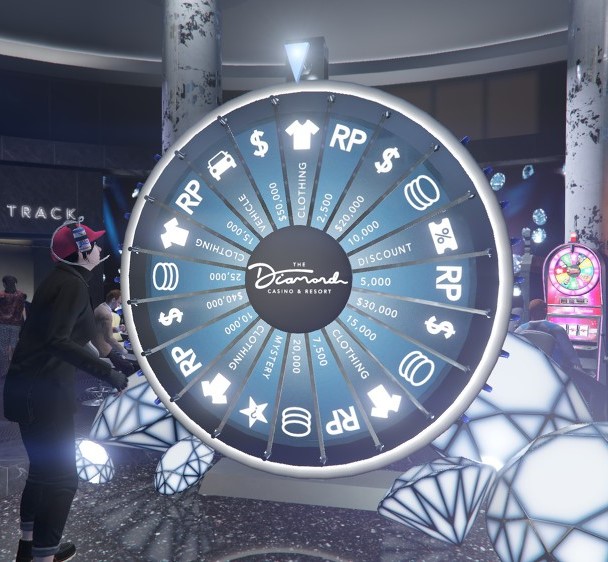우리카지노의 흥미로운 게임과 이벤트 소개
메이저 토토사이트 소개 메이저 토토사이트는 사용자들에게 안전하고 신뢰할 수 있는 온라인 베팅 환경을 제공합니다. 이러한 사이트들은 엄격한 검증 과정을 거쳐 사용자들에게 고품질의 게임 경험을 제공하며, 다양한 게임과 베팅 옵션을 제공함으로써 사용자들이 편리하게 이용할 수 있습니다. 또한, 이들 사이트는 강력한 보안 조치를 통해 사용자 정보와 자금을 안전하게 보호하며, 공정한 게임 운영을...

메이저 토토사이트 소개 메이저 토토사이트는 사용자들에게 안전하고 신뢰할 수 있는 온라인 베팅 환경을 제공합니다. 이러한 사이트들은 엄격한 검증 과정을 거쳐 사용자들에게 고품질의 게임 경험을 제공하며, 다양한 게임과 베팅 옵션을 제공함으로써 사용자들이 편리하게 이용할 수 있습니다. 또한, 이들 사이트는 강력한 보안 조치를 통해 사용자 정보와 자금을 안전하게 보호하며, 공정한 게임 운영을...
카지노사이트: 온라인 게임의 새로운 장 카지노사이트는 온라인 게임의 세계에서 혁신의 상징입니다. 이러한 플랫폼들은 사용자에게 전례 없는 편리함과 다양한 게임 옵션을 제공합니다. 온라인 카지노의 발전과정, 게임 다양성, 사용자 경험의 진화에 대해 자세히 탐구합니다. 사용자는 집에서 편안하게 다양한 게임을 즐길 수 있으며, 실시간으로 다른 플레이어와 상호작용할 수 있습니다. 이는 기존의 카지노 경험을...
메이저사이트 소개와 중요성 메이저사이트는 토토 배팅을 위한 신뢰할 수 있는 플랫폼입니다. 이러한 사이트들은 사용자의 안전과 보안을 최우선으로 하여, 불법적인 활동이나 사기로부터 사용자를 보호합니다. 토토친구는 이러한 메이저사이트들을 엄격한 기준으로 선별하고 있으며, 이를 통해 사용자는 안심하고 서비스를 이용할 수 있습니다. 메이저사이트는 사용자에게 다양한 게임 옵션, 경쟁력 있는 배당률, 그리고 매력적인 이벤트와 프로모션을...
유흥알바는 단순히 일자리를 찾는 것 이상의 의미를 갖습니다. 현대 사회에서 유흥업계는 다양한 직업 경로를 제공하며, 특히 미수다 커뮤니티는 이 분야의 취업을 희망하는 사람들에게 귀중한 자원을 제공합니다. 이 커뮤니티는 유흥업계의 다양한 일자리 정보를 소개하고, 구직자들이 자신에게 맞는 직업을 찾을 수 있도록 돕습니다. 미수다는 정보의 접근성을 높이고, 업계에 대한 투명한 이해를 바탕으로...
스웨디시쏘 소개 스웨디시쏘는 마사지 애호가들의 새로운 명소로 자리 잡았습니다. 이곳은 마사지의 다양한 형태와 기술을 공유하는 커뮤니티로서, 편안함과 건강을 추구하는 이들에게 최적화된 정보를 제공합니다. 스웨디시쏘에서는 전문가와 사용자 간의 소통을 통해 마사지에 대한 새로운 통찰을 얻을 수 있으며, 개인의 요구에 맞춘 마사지 방법을 찾을 수 있습니다. 이곳에서는 다양한 스타일과 기법을 탐색하며 자신에게...
여성고소득알바 소개 여성고소득알바 시장은 빠르게 변화하고 있으며, 그 중심에는 이지알바가 있습니다. 이 플랫폼은 여성들에게 다양한 고소득 아르바이트 기회를 제공함으로써 재정적 독립을 가능하게 합니다. 여기서는 전문적인 커리어부터 단기 고소득 알바까지 다양한 분야의 일자리를 찾을 수 있습니다. 이지알바는 사용자의 경력과 기술을 고려하여 최적의 일자리를 추천함으로써, 여성들이 자신의 능력을 최대한 발휘할 수 있도록...
안전놀이터란 무엇인가? 안전놀이터는 사용자에게 보증된 토토사이트를 추천하는 플랫폼입니다. 토토친구는 빅데이터와 철저한 검증 과정을 통해 최상의 안전놀이터를 선별합니다. 이는 사용자가 신뢰할 수 있는 토토사이트에서 안심하고 베팅을 즐길 수 있도록 돕습니다. 토토친구의 업체 선정 기준 토토친구는 엄격한 기준과 절차를 통해 토토사이트를 선별합니다. 이는 업체의 재정 안정성, 사용자 리뷰, 서비스 품질 등을 포함하여...
저번 주, 피로에 지친 몸을 이끌고 처음으로 스웨디시 마사지를 받으러 갔습니다. 그 경험은 단순히 휴식을 취하는 것 이상이었습니다. 이 기사에서는 스웨디시 마사지의 정의와 효과, 가격비교 및 업체 정보 등에 대해 알아보겠습니다. 스웨디시 마사지란? 스웨디시 마사지는 전통적인 유럽의 마사지 기법 중 하나로, 깊고 규칙적인 손의 움직임을 통해 근육의 긴장을 풀어주고 혈액...
안전놀이터: 신뢰의 시작점 안전놀이터는 레저 및 오락 활동에 대한 안전한 환경을 제공하는 온라인 플랫폼입니다. 이곳에서는 사용자의 안전을 최우선으로 하며, 다양한 보증 업체들과 함께 사용자들에게 안전한 놀이 환경을 제공합니다. 이러한 안전놀이터의 추천과 검증 과정은 매우 엄격하며, 이용자들에게 신뢰할 수 있는 선택을 가능하게 합니다. 이박사의 안전놀이터 추천은 이러한 신뢰의 첫걸음이 될 것입니다....
안전놀이터의 중요성 안전놀이터는 사용자들에게 보안과 신뢰성을 제공하는 토토사이트입니다. 토토친구는 빅데이터를 활용하여 엄선된 안전놀이터를 추천함으로써, 사용자들이 안심하고 게임을 즐길 수 있는 환경을 제공합니다. 이 플랫폼은 각 업체의 신뢰성, 사용자 리뷰, 서비스 품질 등을 철저히 검증하여 추천합니다. 토토친구 플랫폼 소개 토토친구는 사용자에게 맞춤형 안전놀이터를 제공하는 플랫폼입니다. 이 플랫폼은 사용자 경험을 최우선으로 하여,...
카지노사이트 순위의 비밀 우리는 수많은 카지노사이트 중에서 어떻게 최상위 업체를 고를 수 있을까요? 빅데이터 분석은 방대한 정보 속에서 사용자 경험과 선호도를 기반으로 한 순위를 제공합니다. 이를 통해 사용자는 안전하고 신뢰할 수 있는 카지노사이트를 쉽게 찾을 수 있습니다. 보증업체 선택의 중요성 카지노사이트를 선택할 때 보증업체의 중요성은 강조할 수 없습니다. 보증업체는 안전성과...
밤알바란 무엇인가? 밤알바는 주로 저녁 또는 밤 시간에 진행되는 아르바이트를 의미합니다. 이는 다양한 업종에서 찾아볼 수 있으며, 특히 서비스 업종에서 인기가 많습니다. 급여와 취업 정보 밤알바의 급여는 일반 아르바이트에 비해 상대적으로 높은 편입니다. 특히, 팁이나 추가 수당이 포함될 수 있어, 많은 사람들이 선호합니다. 취업 정보에 있어서, 이지알바 웹사이트는 다양한 밤알바...
온카 플랫폼: 신뢰와 혁신의 중심지 온카는 사용자 경험을 최우선으로 하는 혁신적인 카지노사이트 플랫폼입니다. 사용자들이 쉽고 편리하게 다양한 카지노 게임을 즐길 수 있는 환경을 제공하면서, 빅데이터 기반의 추천 시스템으로 각 사용자에게 최적화된 게임 경험을 제공합니다. 보증업체 선정: 안전과 신뢰의 기준 온카는 엄격한 기준과 검증 절차를 통해 보증업체를 선정합니다. 이는 사용자들에게 안전하고...
파워볼의 특징 동행복권 파워볼은 한국에서 꽤나 인기있는 복권 게임입니다. 당첨금이 높아서 많은 사람들의 마음을 사로잡고 있죠. 이 게임의 특징은 단순히 운만 의지하는 것이 아닌, 데이터와 패턴을 활용하여 당첨 가능성을 높일 수 있다는 점입니다. 이용방법 파워볼을 이용하는 방법은 간단합니다. 원하는 숫자를 선택하고 참여하기만 하면 됩니다. 하지만, 그냥 참여하는 것이 아니라 전략적으로...
일용직 근로자들을 위한 대출은 종종 어려움에 부딪히곤 합니다. 하지만 ‘이지론’은 이러한 어려움을 해결해주는 효과적인 솔루션을 제공합니다. 일용직 대출이란, 일시적인 수입이나 비정규적인 급여에도 불구하고 필요한 자금을 빌릴 수 있는 서비스입니다. 이 서비스는 특히 일용직 근로자들에게 매우 유용합니다. 일용직 대출의 이용 방법 이지론을 이용하는 방법은 간단합니다. 온라인 플랫폼을 통해 신청하고, 최소한의 서류만...